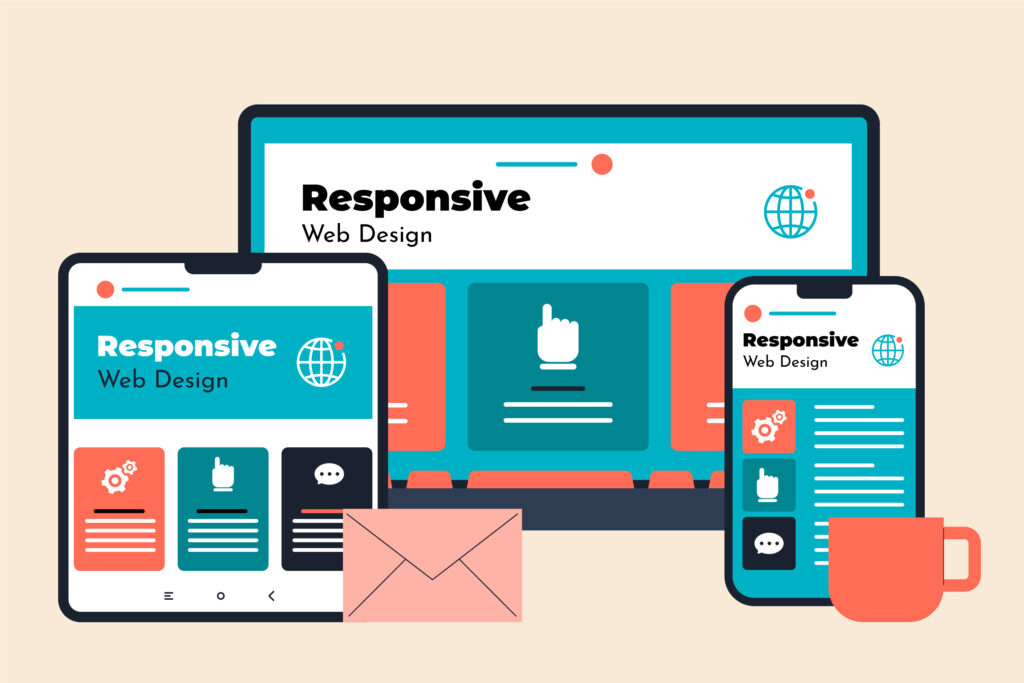Responsive Web Design: Why It Matters
The internet has become the backbone of modern communication, commerce, and information sharing. With billions of users accessing the web from a variety of devices—desktops, laptops, tablets, and smartphones—the need for websites that adapt seamlessly across platforms has never been greater. This is where responsive websites come in. A responsive website is designed to automatically adjust its layout, design elements, and functionality based on the device and screen size being used. In today’s digital-first economy, responsiveness is not a luxury but a necessity for businesses and organizations that want to remain relevant, competitive, and accessible to their audiences.
The Concept of Responsive Design
Responsive web design emerged as a solution to a simple but critical problem: traditional websites were designed primarily for desktop screens, which made them difficult to navigate on smaller devices. When mobile browsing exploded, companies realized that maintaining separate mobile and desktop versions of their websites was inefficient, costly, and inconsistent in terms of user experience. The concept of responsive design was introduced as a more holistic approach. Instead of building multiple versions of a site, a single design could be created with flexible grids, images, and style sheets that automatically adapt to different screen sizes.

Why Responsive Websites Matter
User behavior is one of the strongest drivers behind the demand for responsive websites. A growing majority of internet traffic comes from mobile devices, and this trend continues to rise every year. If a website does not display properly on a phone or tablet, the chances are high that the visitor will leave immediately and look for a competitor’s site that offers a smoother experience. Responsiveness, therefore, directly impacts bounce rates, customer satisfaction, and ultimately sales or conversions.Search engines also recognize the importance of responsive design. Google, for instance, prioritizes mobile-friendly websites in its ranking algorithms. A website that fails to adapt to different devices is likely to appear lower in search results, reducing its visibility and limiting organic traffic. Beyond search rankings, responsiveness also influences brand credibility.
Key Characteristics of a Responsive Website
At the heart of responsiveness is flexibility. A responsive site uses fluid grids that proportionally resize design elements rather than fixing them to specific pixel dimensions. This ensures that layouts expand or contract smoothly as the screen changes. Images and multimedia files are also optimized to adjust automatically without compromising quality.ypography plays a crucial role as well. Font sizes, line spacing, and content blocks are carefully adjusted to ensure readability without overwhelming small screens or appearing sparse on large ones. Performance optimization is equally important. Responsive sites are designed with fast-loading assets and lightweight code to deliver consistent speed regardless of device or network conditions.
Benefits of Responsive Websites
A responsive website delivers an excellent browsing experience across all devices, which naturally improves user satisfaction and engagement. Search engines prioritize mobile-friendly sites, so responsiveness boosts visibility and rankings. It also saves development costs by eliminating the need for separate mobile and desktop versions. With faster loading speeds and adaptability to future devices, a responsive design keeps your business ahead in the digital age.
Challenges in Building Websites
While the benefits are clear, building a responsive website is not without challenges. Designing for multiple screen sizes requires careful planning and testing. Developers must account for a wide variety of devices, browsers, and operating systems, ensuring consistent performance across all of them. Optimizing media files to balance quality and speed can also be demanding, particularly for sites that rely heavily on visual content such as photography, video, or interactive graphics.

The Role of Responsive Design in User Experience
User experience (UX) is at the core of responsive websites. Visitors should not have to think about whether a site is optimized for their device; the design should adapt so naturally that the experience feels seamless. Responsive design reduces friction by ensuring that navigation is intuitive, content is legible, and interactions are smooth. Whether a user is filling out a form, making a purchase, or simply reading an article, responsiveness ensures that every step feels effortless.
Future of Responsive Websites
The future of responsive design is closely tied to ongoing technological advancements. As devices become more diverse, websites will need to adapt not just to different screen sizes but also to new formats, such as foldable phones, wearable devices, and smart TVs. Emerging trends such as progressive web apps (PWAs) are also shaping the future by blending the functionality of mobile apps with the accessibility of websites.
Artificial intelligence and machine learning are expected to further personalize responsive experiences. Instead of merely adapting layouts to screen sizes, websites will increasingly adapt to individual user preferences, behaviors, and contexts. For instance, a responsive site may present different navigation paths based on whether the visitor is browsing casually, shopping with intent, or seeking customer support.
